

Anne Frank’s parents both came from middle-class German-Jewish families. Her mother, Edith Holländer, grew up in a practising Jewish home. As he said himself, Otto Frank was “born in Germany into an assimilated family that had lived in that country for centuries”. After their wedding in 1925, the two of them lived in Otto’s hometown of Frankfurt where Margot was born in 1926 and Anne in 1929.
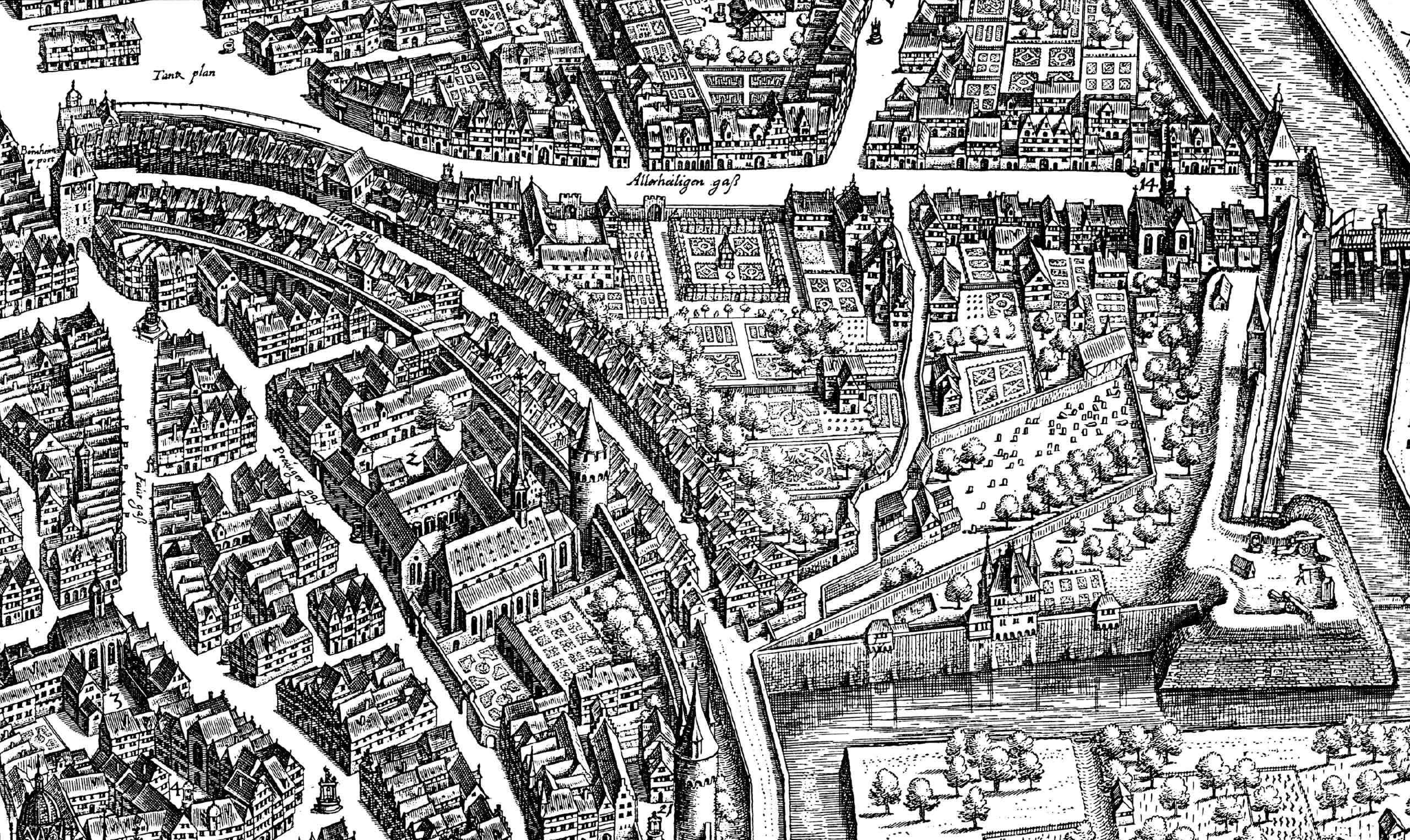
The Judengasse in Frankfurt am Main. Etching by Matthäus Merian, 1628.
The Franks have particular connections to the city of Frankfurt am Main: evidence shows that part of the family had lived there since the 16th century. Jews in Frankfurt, as in other European cities, were only permitted to settle in the ghetto, which in Frankfurt was the «Judengasse». The aftermath of the French Revolution brought equal rights for all religious denominations in 1806 and in particular the «act concerning equal civic rights of the Jewish municipality of Frankfurt» of 1811. From now on, the Frankfurt Jews were free to live anywhere in town and were not subjected to special taxes anymore. When full civic emancipation was introduced in 1864, the Jewish community of Frankfurt flourished. By the early 20th century, it had about 22,000 members and was regarded as one of the most significant Jewish communities in Europe..
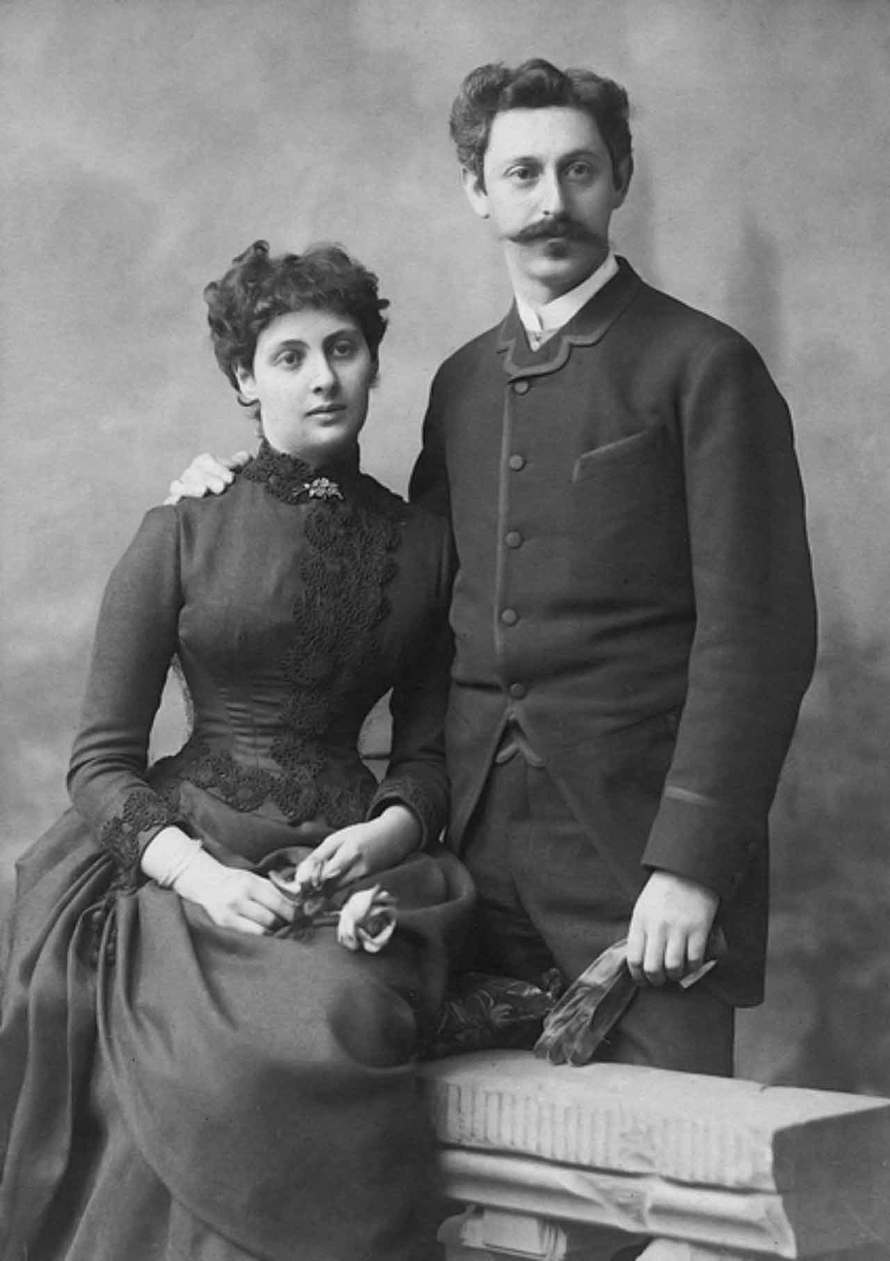
Alice and Michael Frank shortly after their wedding 1886. © Anne Frank Fonds, Basel
Otto Frank’s mother, Alice Stern, was born in 1865. She grew up in a wealthy household in Frankfurt. Until the age of 15, she attended schools and then received private tuition. In 1886, she married Michael Frank, who was fourteen years her senior.
Michael Frank came from Landau, a small town in the Palatinate region. He was the sixth of nine siblings. At the time of the wedding, the 35-year-old was a successful business man and already a shareholder in several companies. In 1901, he established the «Michael Frank banking business.».
Alice and Michael Frank had four children: Robert, Otto, Herbert and Helene (Leni). Later, Anne Frank will write in her diary that her father Otto led «the life of a rich man’s son»: «Parties every week, balls, banquets, beautiful girls, waltzing, dinners, a huge house, etc.» (Diary, 8. May 1944)
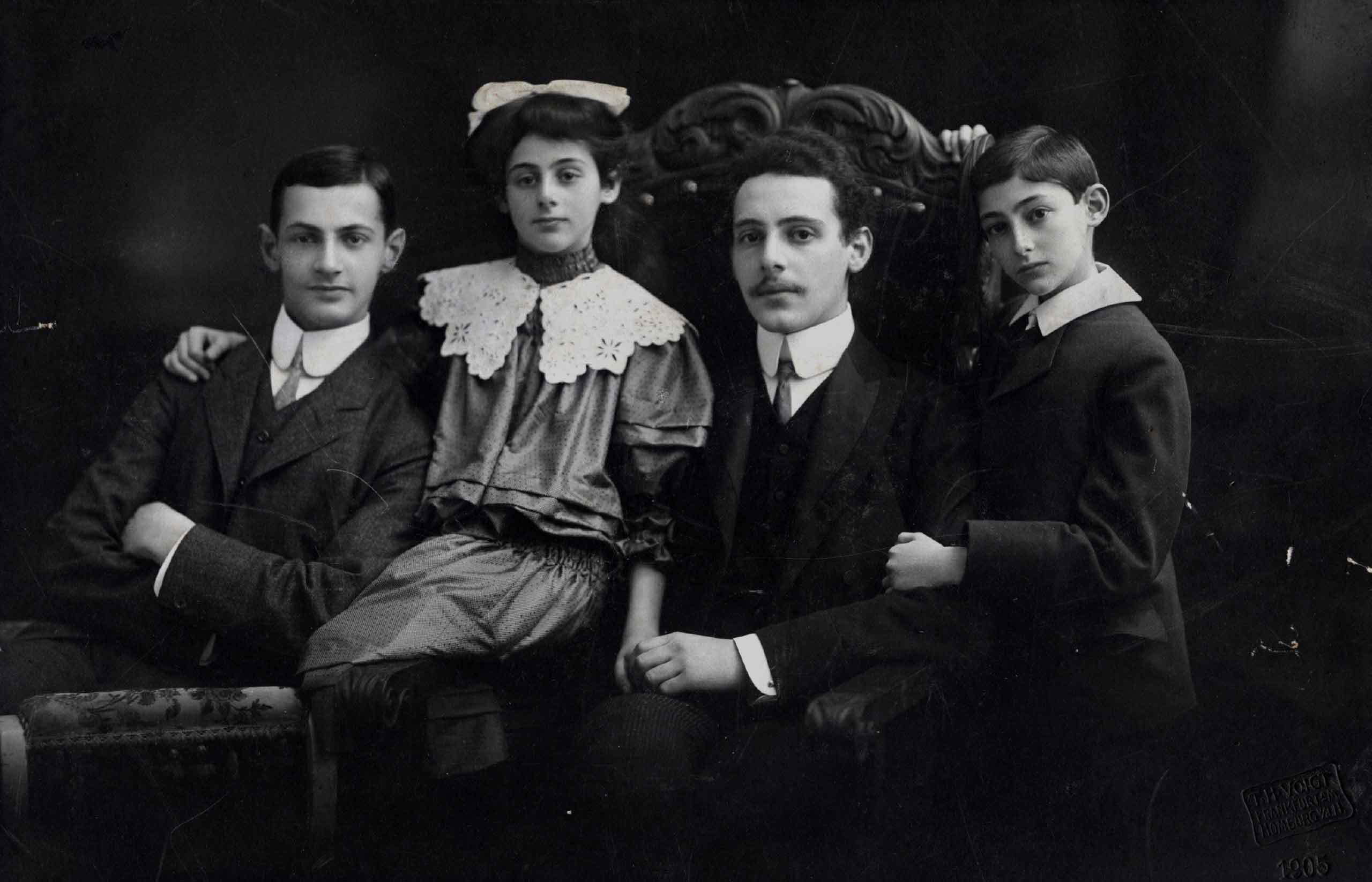
The Frank siblings: Otto, Leni, Robert and Herbert, around 1907. © Anne Frank Fonds, Basel
After the unexpected death of Michael Frank in 1909, Alice took over the family business, supported by her now adult sons, Robert and Otto.
When the First World War broke out in 1914, the Frank family’s three sons all served as front-line soldiers in the German army. Alice and her daughter Leni worked as auxiliary nurses in a Red Cross military hospital. After the war, Otto Frank was awarded the Iron Cross for his military services.
A considerable proportion of the family fortune was spent on purchasing war bonds. The family lost a significant part of its capital when Germany lost the war. The dire economic and political situation resulted in a constant downward spiral of the banking business, which was finally dissolved in early 1934.
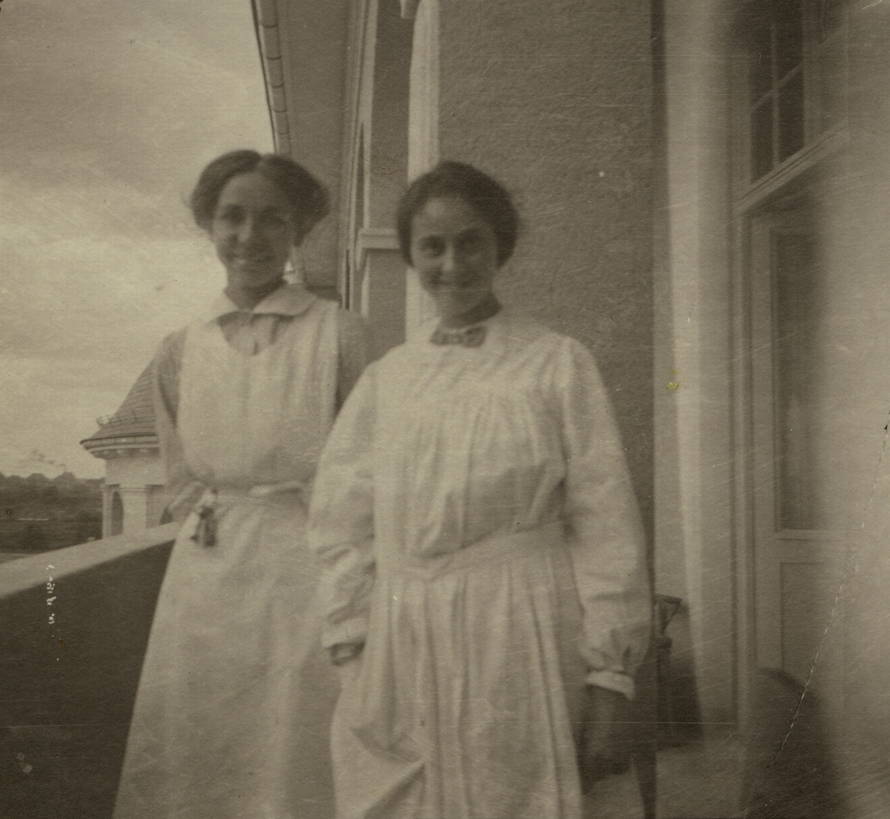
Leni Frank (right) as an assistant in a military hospital, 1916. © Anne Frank Fonds, Basel
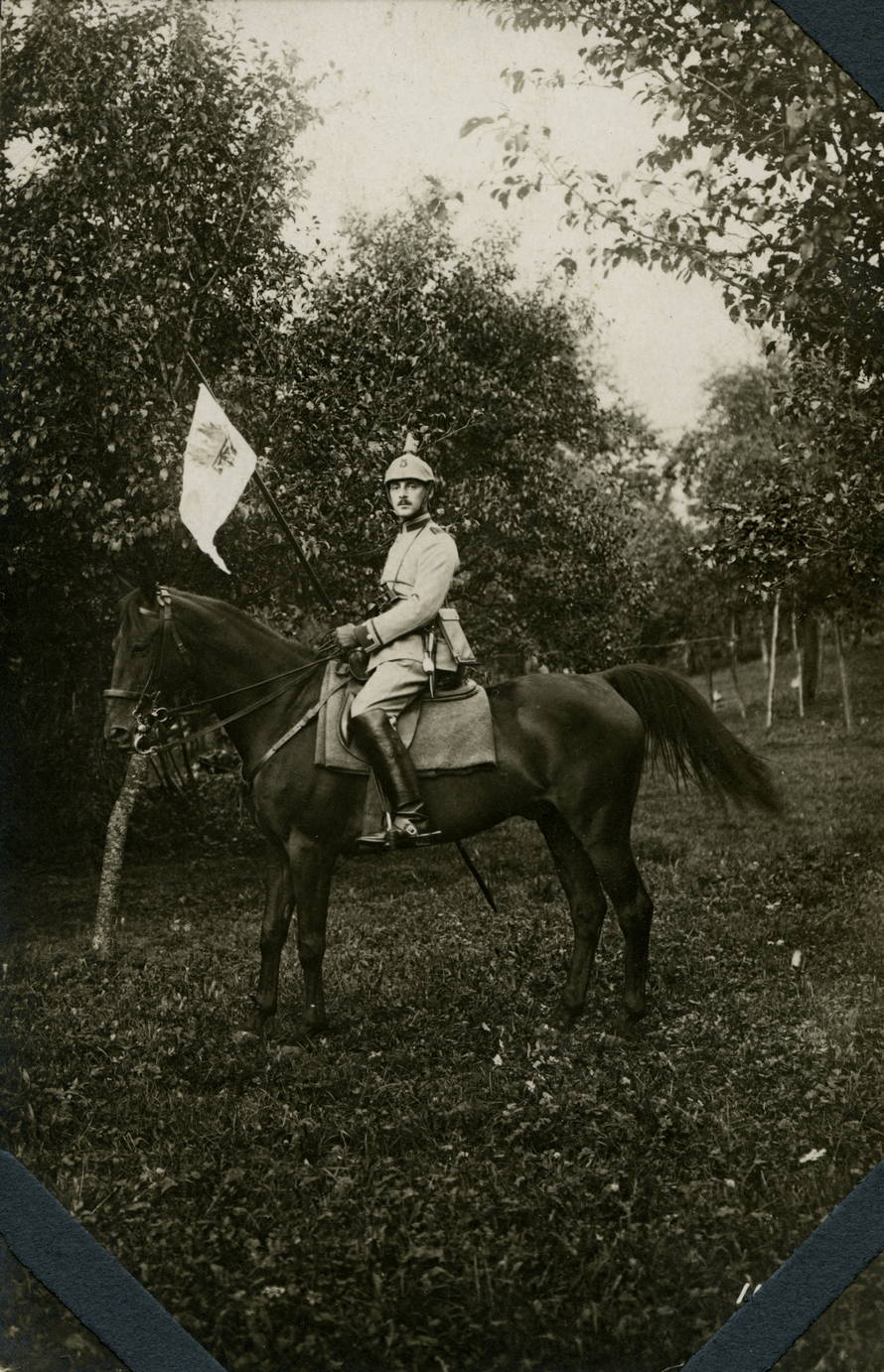
Robert Frank as a soldier in the First World War. © Anne Frank Fonds, Basel
Even in liberal Frankfurt, the Nazi party (NSDAP) gained almost fifty per cent of the votes in the municipal elections of March 1933. Frankfurt’s Jewish mayor, Ludwig Landmann, was forced to resign. The new mayor, a member of the NSDAP, immediately ordered the dismissal of all Jewish municipal officers.
On 1 April 1933, a boycott of Jewish shops was announced in all major German cities. This was the start of a barrage of anti-Jewish decrees aimed at excluding Jews from all areas of public life. Boycotts, marginalisation and persecution made life increasingly difficult and dangerous for Jews in Germany. The Nazi book burning took place on 10 May 1933, followed by the passing of the Nuremberg Race Laws in 1935, which prohibited marriage and sexual intercourse between Jews and non-Jews. With the «Kristallnacht» of 9–10 November 1938, the Nazis’ deprivation of the Jews’ civic rights reached a first culmination point.
Erich Elias had married Otto Frank’s sister Leni in 1921 and initially also worked for the family bank. But in autumn 1929 he was on the look-out for a new livelihood. He moved to Basel to establish a Swiss branch of Pomosin / Opekta-Werke, a company producing pectin for jam-making. Two years later, Leni followed with their younger son Buddy, their older son Stephan joined them in 1932, and in October 1933, Alice Frank also moved to Basel. Otto’s youngest brother Herbert lived in France from 1932 onwards, while his older brother Robert settled in England in 1933.
Otto and Edith Frank also left Frankfurt in 1933. They moved to the Netherlands, trusting in the fact that in the case of war the country’s neutrality would be respected – as had been the case in the First World War.
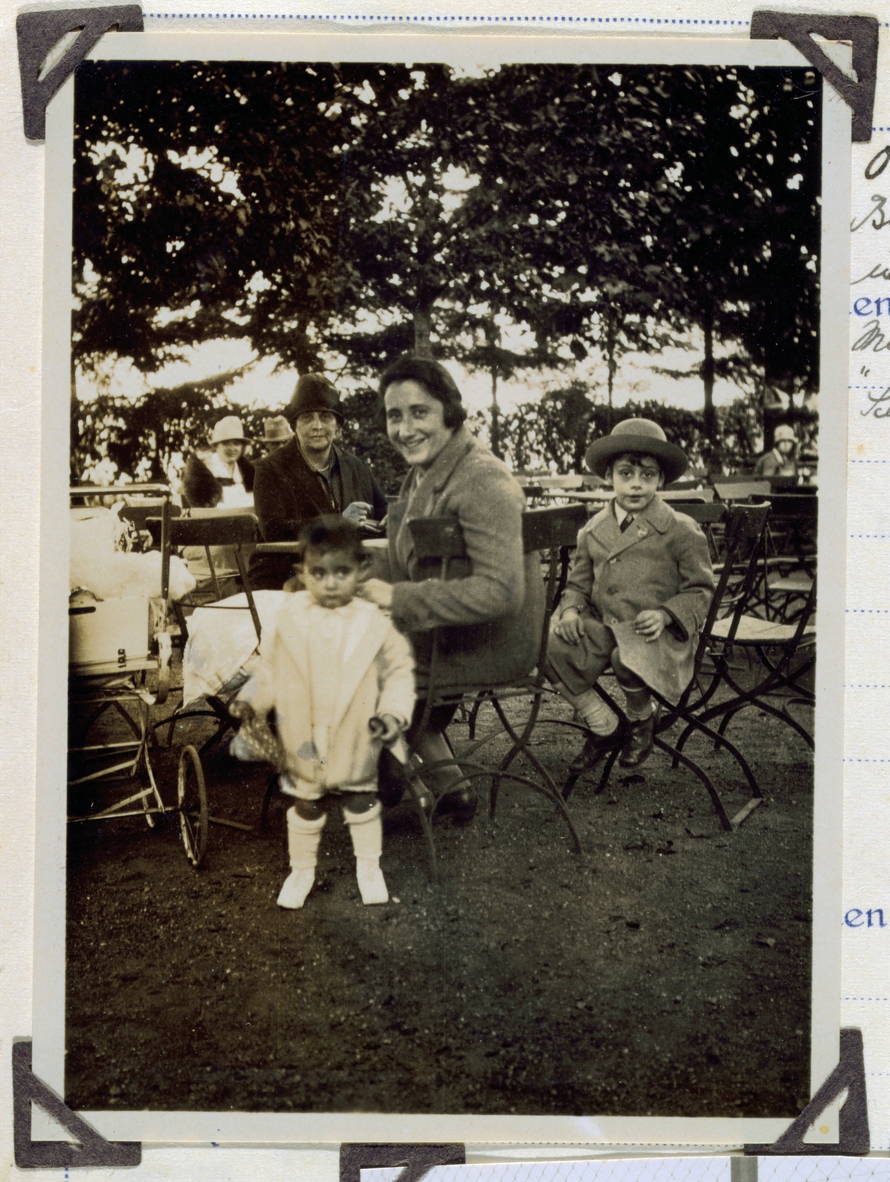
Edith and Margot (standing) with their grandmother, Alice Frank, and their cousin, Stephan Elias, in Frankfurt, 1927. © Anne Frank Fonds, Basel
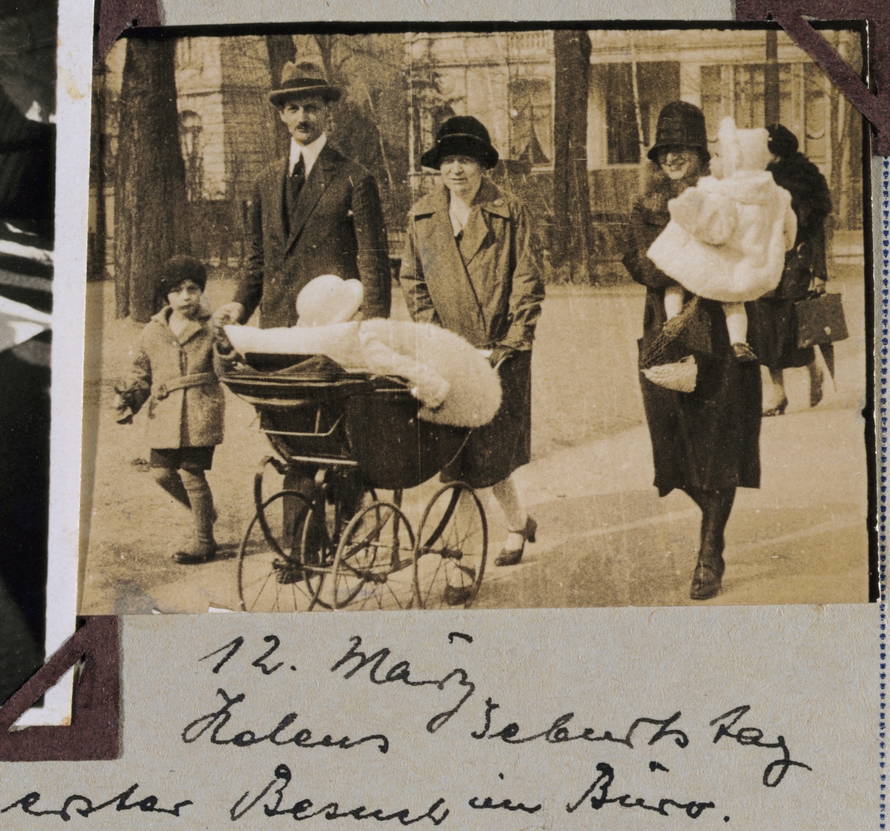
Family walk in Frankfurt am Main. Stephan Elias, Otto, Margot (in the pram), Dadi (nanny), and Edith Frank with Buddy Elias, around 1927 (from left to right). © Anne Frank Fonds, Basel
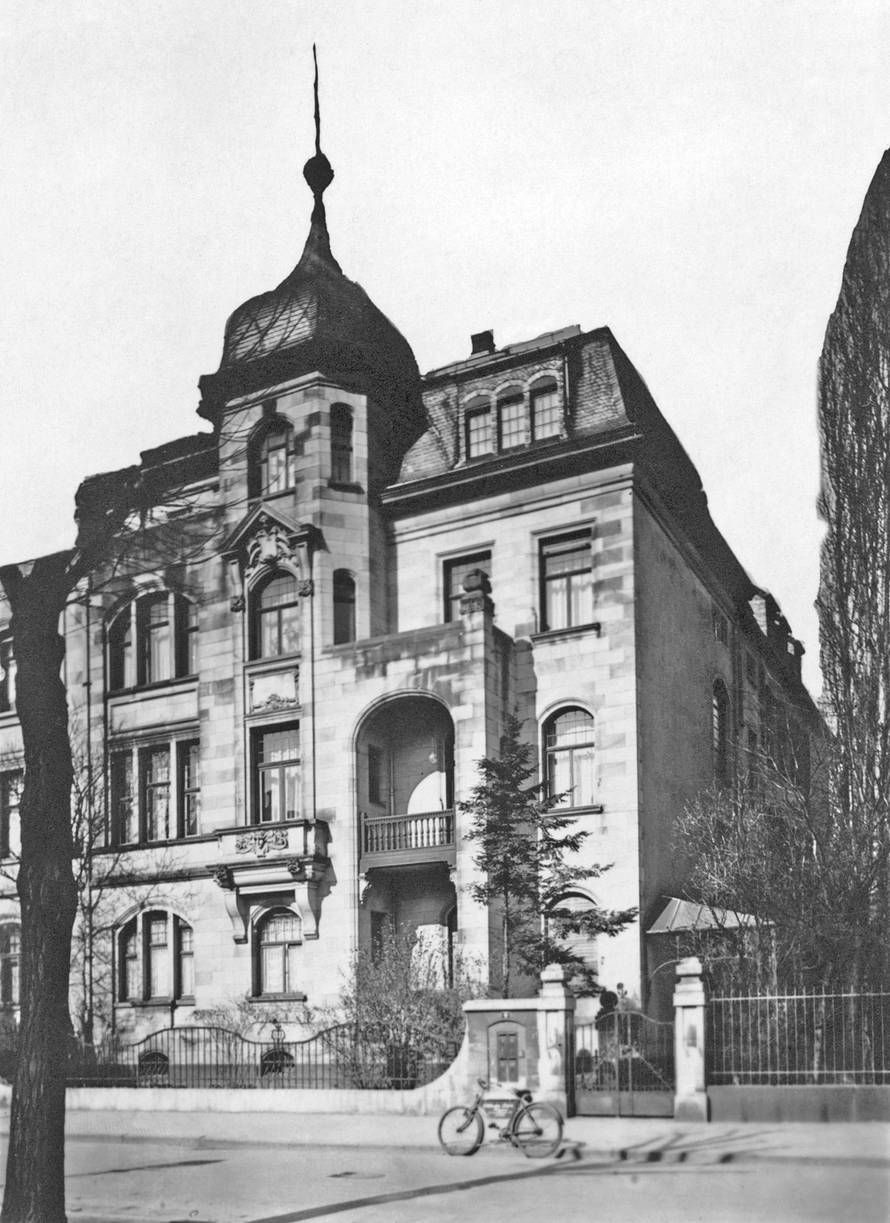
Alice Frank's house at Jordanstrasse 4 (later Mertonstrasse, today Dantestrasse) in Frankfurt am Main. © Anne Frank Fonds, Basel
Otto Frank moved to Amsterdam in 1933. With the support of his brother-in-law, Erich Elias, and his cousin, Jean-Michel Frank, he established a Dutch franchise of Opekta. Edith Frank and their daughters spent a few months with Edith’s mother, Rosa Holländer, in Aachen. In late 1933, Edith followed her husband to Amsterdam with Margot, and in February 1934, the family was reunited when Anne arrived. In March 1939, Edith’s mother also flew to Amsterdam, where she lived with the Frank family in Merwedeplein until her death in January 1942.
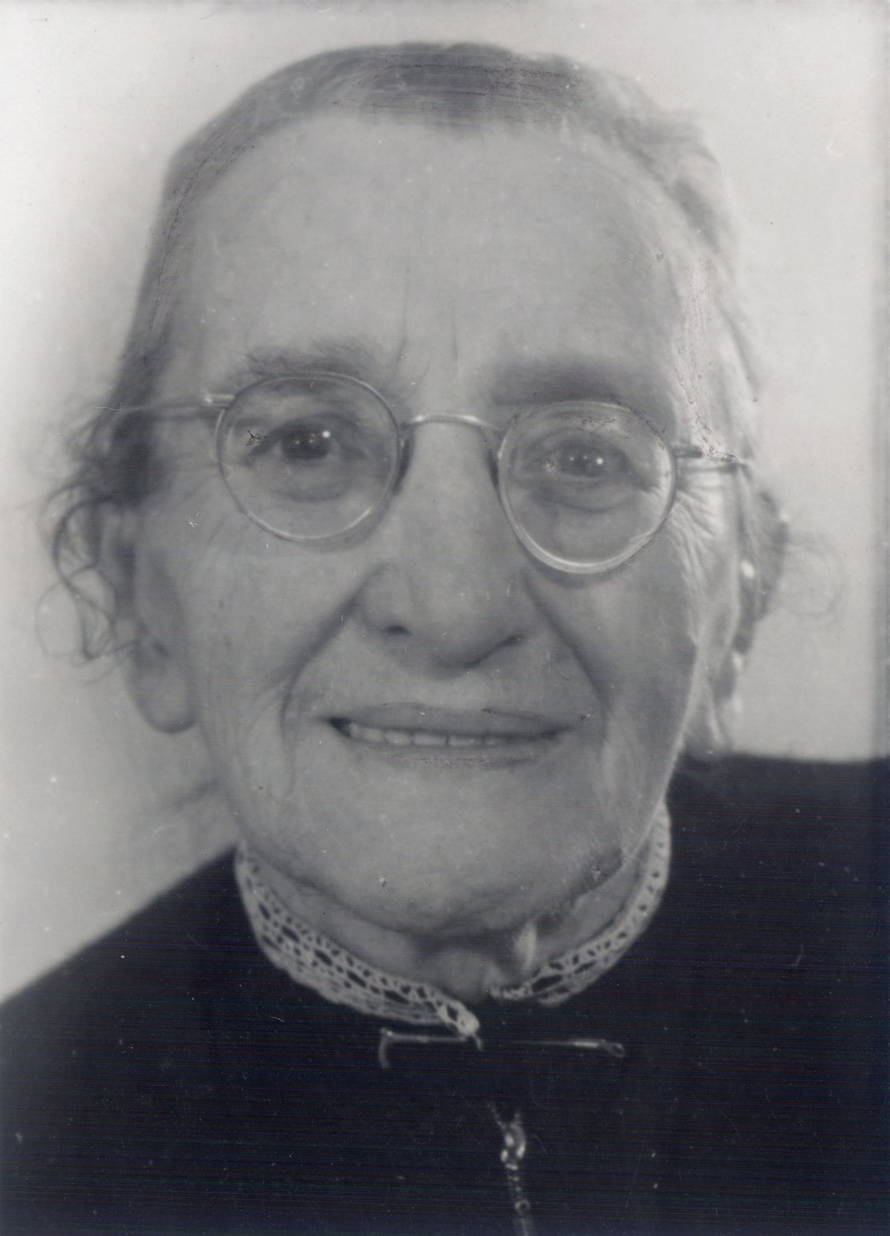
Rosa Holländer-Stern, Edith Frank's mother. © Anne Frank Fonds, Basel
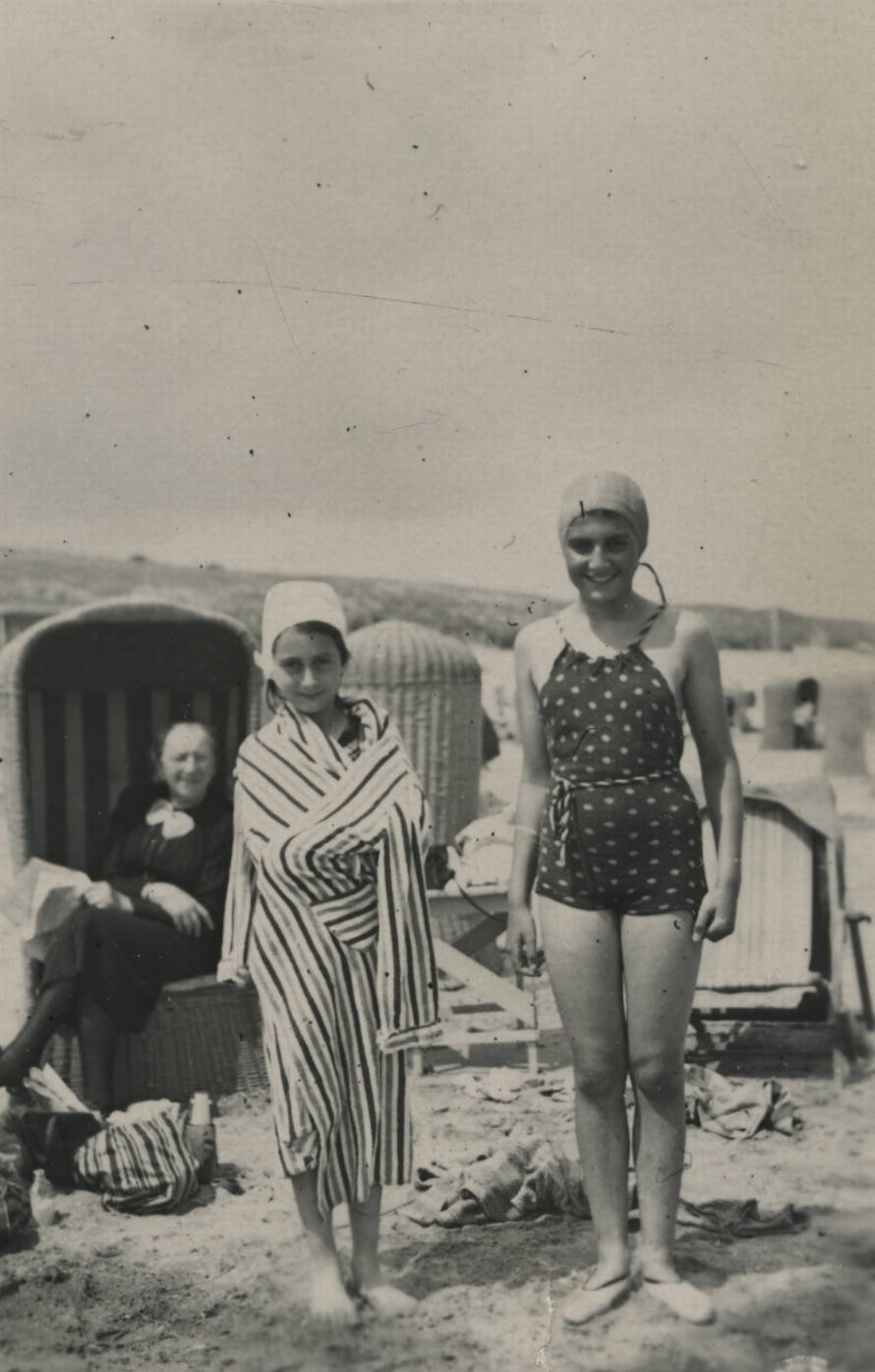
Anne and Margot Frank on the beach, in the background: their grandmother Rosa Holländer, Zandvoort, July 1939. © Anne Frank Fonds, Basel
On 1 September 1939, Hitler started the Second World War by invading Poland. In May 1940, the German army occupied the Netherlands.
«After May 1940 the good times were few and far between: first there was the war, then the capitulation and then the arrival of the Germans, which is when the trouble started for the Jews. Our freedom was severely restricted by a series of anti-Jewish decrees: Jews were required to wear a yellow star; Jews were required to turn in their bicycles; Jews were forbidden to use trams; Jews were forbidden to ride in cars, even their own; Jews were required to do their shopping between 3.00 and 5.00 p.m.; Jews were required to frequent only Jewish-owned barbershops and beauty salons; Jews were forbidden to be out on the streets between 8.00 p.m. and 6.00 a.m.; Jews were forbidden to go to theatres, cinemas or any other forms of entertainment; Jews were forbidden to use swimming pools, tennis courts, hockey fields or any other athletic fields; Jews were forbidden to go rowing; Jews were forbidden to take part in any athletic activity in public; Jews were forbidden to sit in their gardens or those of their friends after 8.00 p.m.; Jews were forbidden to visit Christians in their homes; Jews were required to attend Jewish schools, etc. You couldn’t do this and you couldn’t do that, but life went on»
Diary, 20. June 1942
In occupied areas, Jews were drastically restricted in their professional and social lives. In July 1942, the Germans started to deport Dutch Jews, officially for “labour duty in the east”. On 5 July 1942, Margot received the written summons to register for one of these transports. One day later, on 6 July, the family goes into hiding in the secret annex of the Opekta building at Prinsengracht 263. Otto Frank and his helpers had set up the hiding place several months previously.
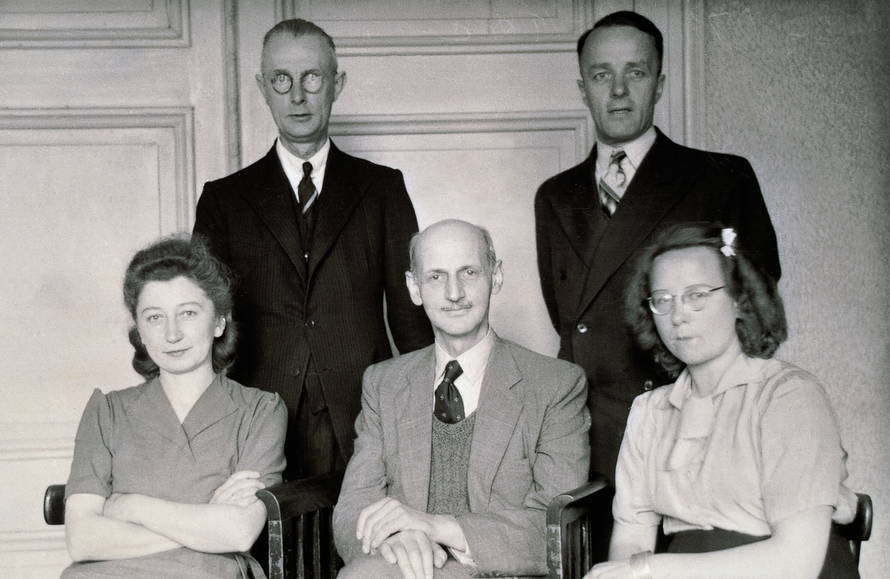
Miep Gies, Johannes Kleiman, Otto Frank, Victor Kugler, and Bep Voskuijl (from left to right), Amsterdam, 1935. © Anne Frank Fonds, Basel
The Frank family lives there for more than two years, at first on their own, later with the Van Pels family – Hermann, Auguste and their son Peter – and the dentist Fritz Pfeffer. In her diary, Anne Frank describes everyday life and living together in the secret annex.
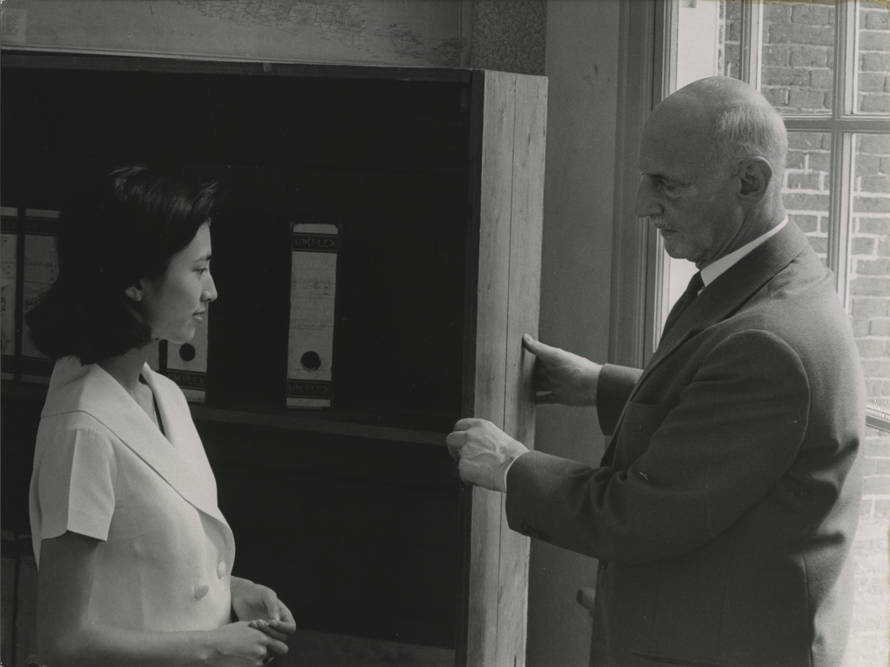
Otto Franks shows a visitor the concealed entrance to the secret annex. © Anne Frank Fonds, Basel
The hiding place in the secret annex is discovered in 1944, presumably through betrayal. During the occupation, numerous «bounty hunters» lived on the financial rewards from successful arrests. The exact circumstances that led to the discovery of the hiding place could never be clarified
On 4 August, the eight in hiding are arrested and sent to the Westerbork transit camp. On 3 September, together with her sister and her parents, Anne Frank is deported to the Auschwitz concentration camp on the last transport from Westerbork. The transport in a cattle wagon lasts three days and three nights. On the trackside ramp outside Auschwitz, families are torn apart. At first, the girls remain in the Auschwitz-Birkenau camp with their mother. In October they are separated from their mother and deported to the Bergen-Belsen concentration camp. Edith Frank dies of starvation and exhaustion in Auschwitz-Birkenau on 6 January. Anne and Margot die from disease in March 1945. Otto Frank is the only one of the eight inhabitants of the secret annex to survive the labour and concentration camps.
Otto Frank’s mother, Alice, and his siblings – Robert in England, Leni in Switzerland with her family, and Herbert in France – survived the war. Edith’s brothers, Julius and Walter Holländer, had fled to the USA before the outbreak of the Second World War and also survived.
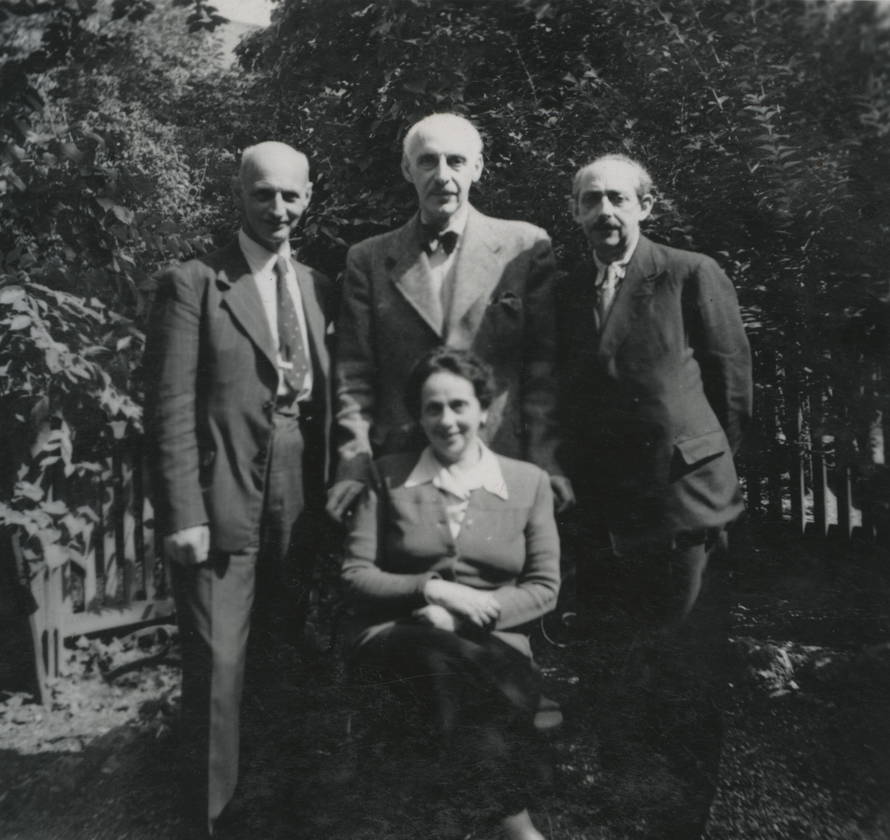
The Frank siblings after the war: Otto, Robert, and Herbert (back), Leni Elias (front). © Anne Frank Fonds, Basel
«How wonderful it is that no one has to wait, but can start right now to change the world!»
From: Pressler, Give!
26 March 1944